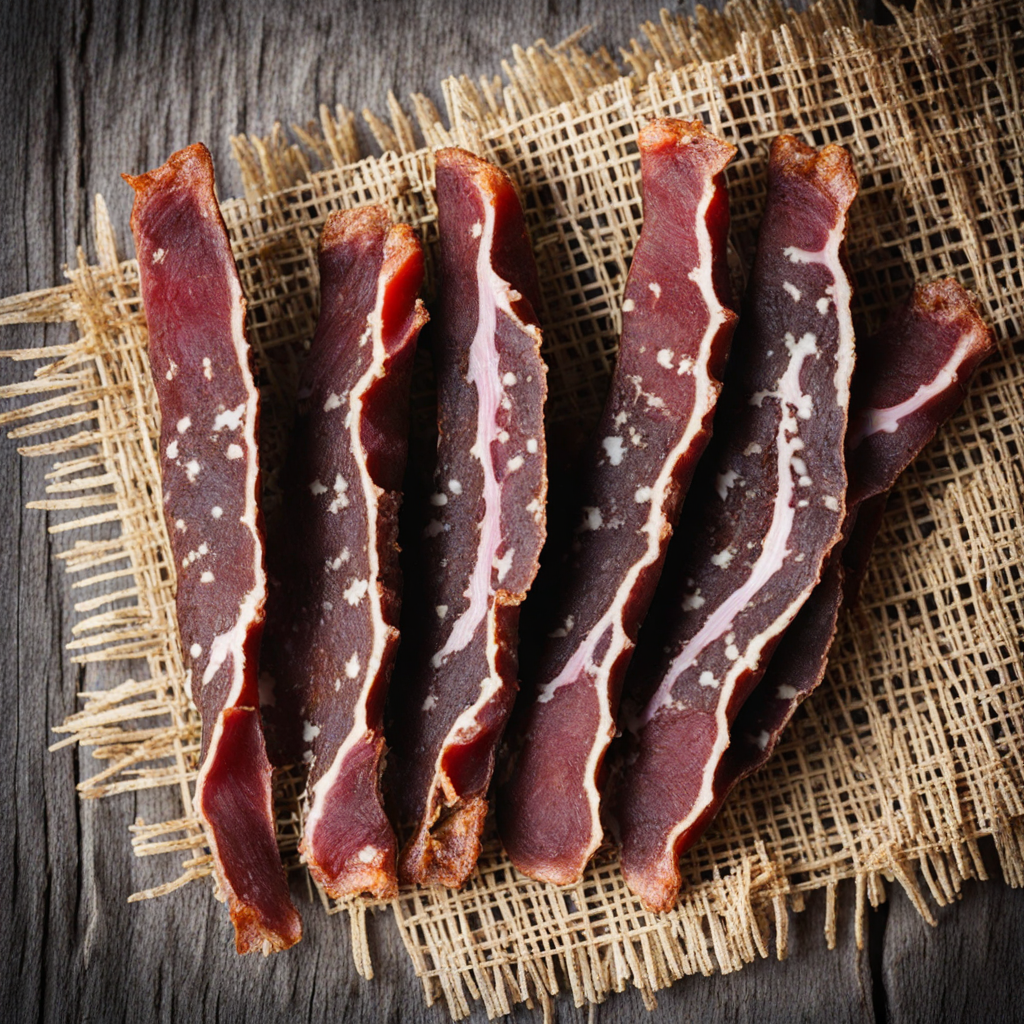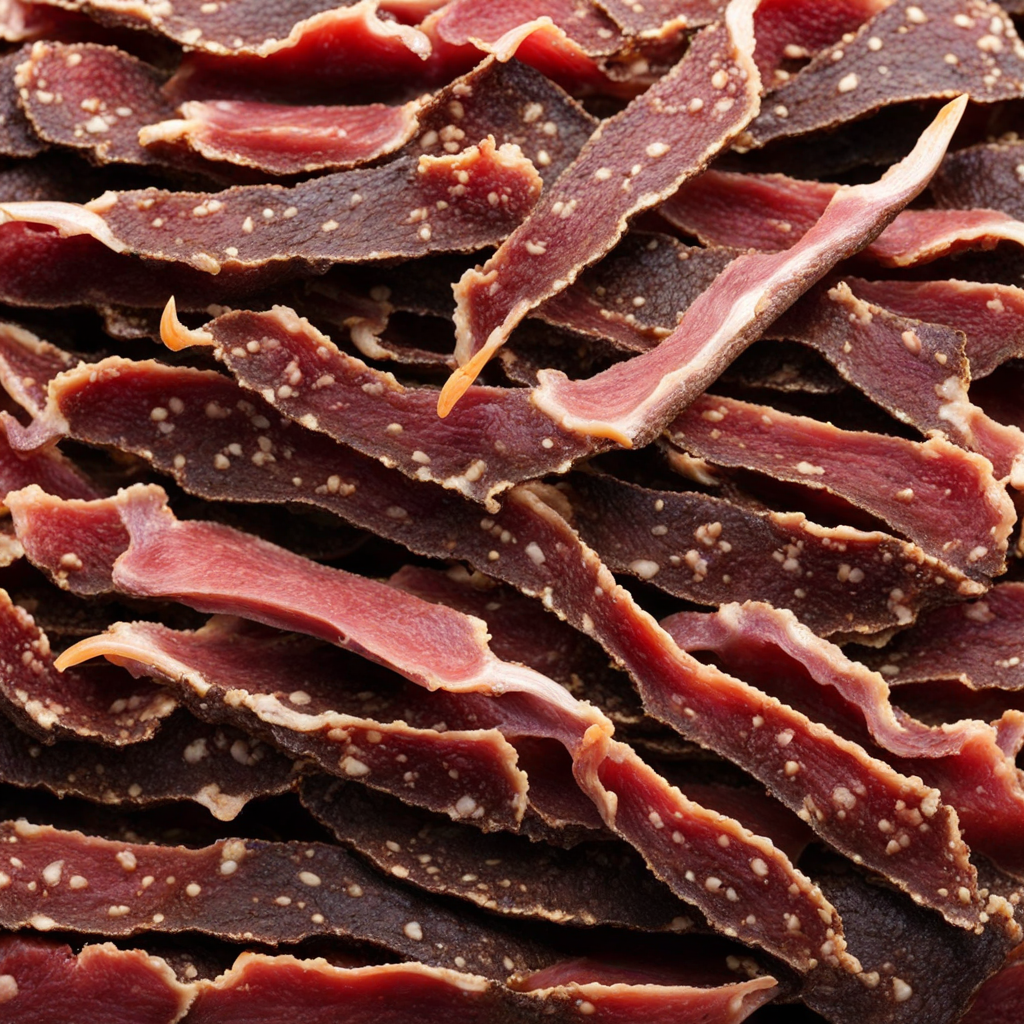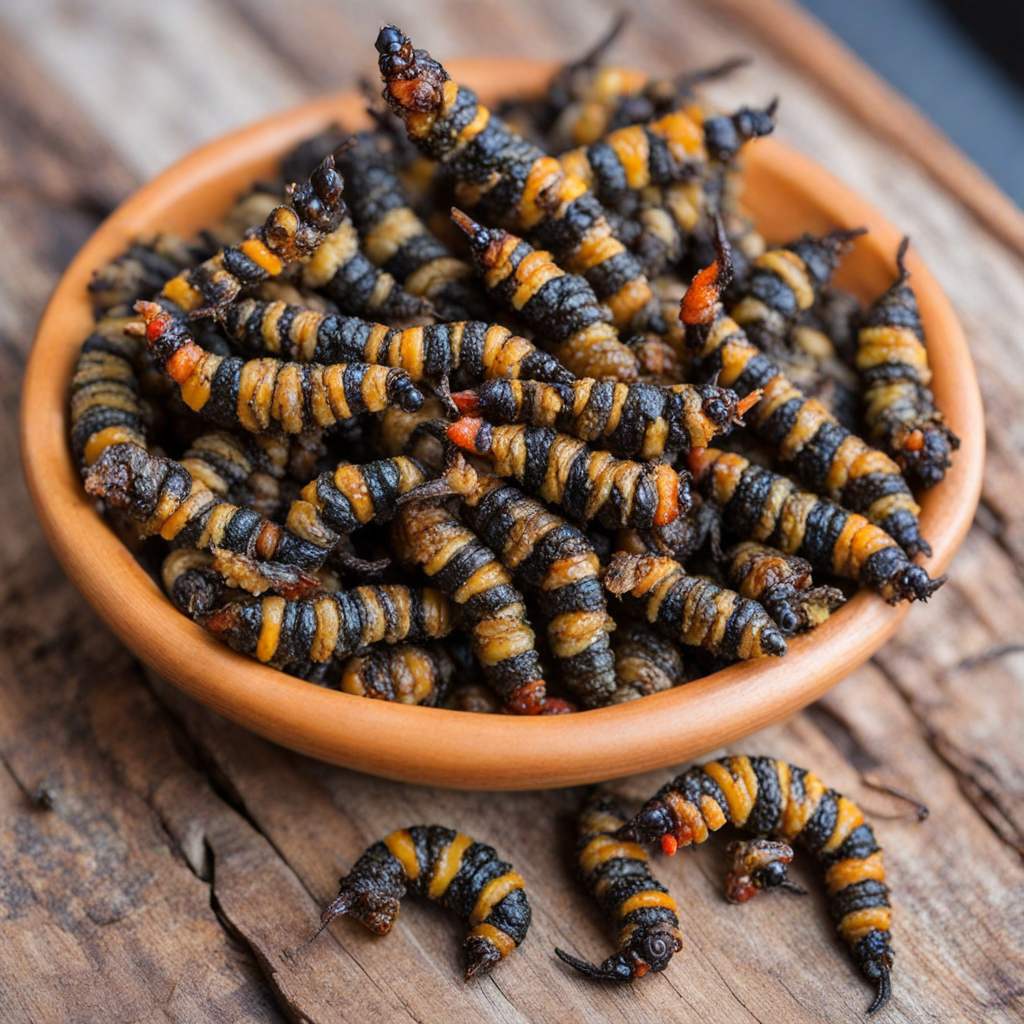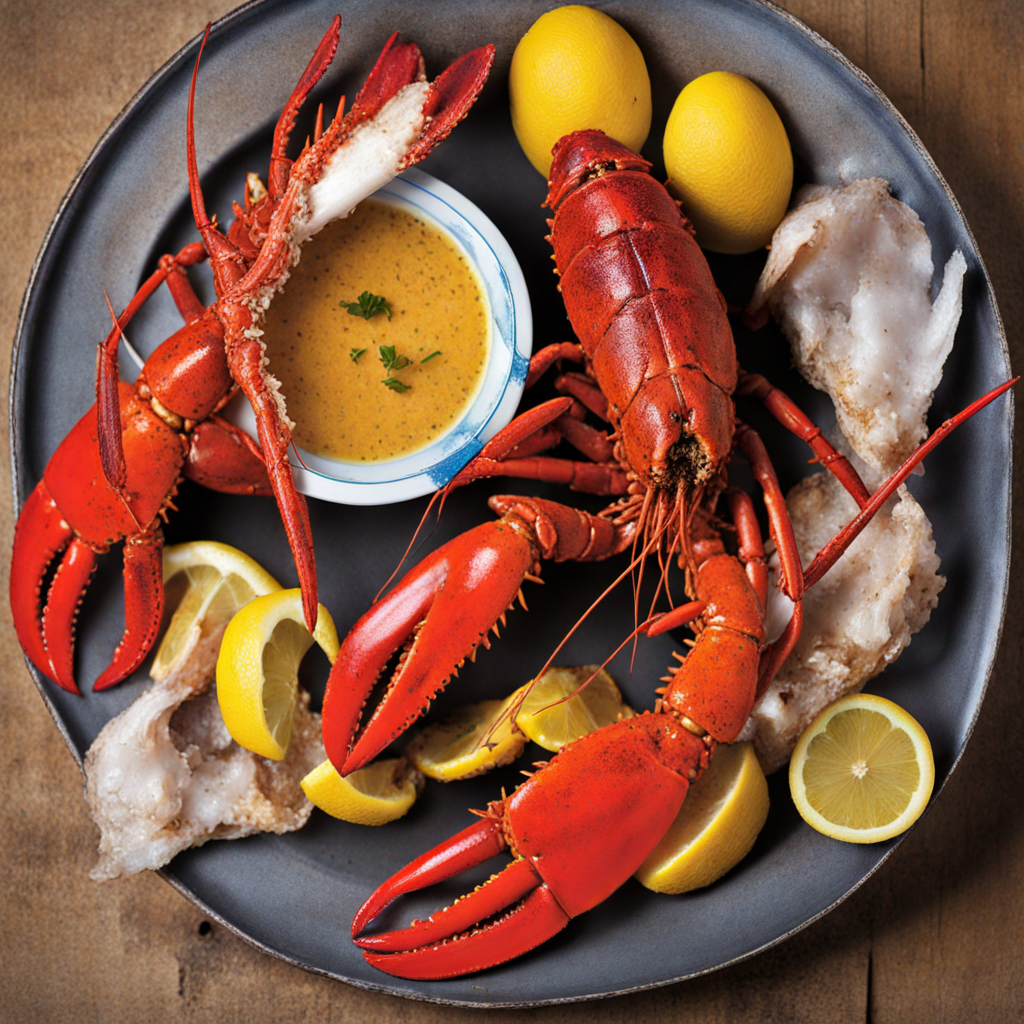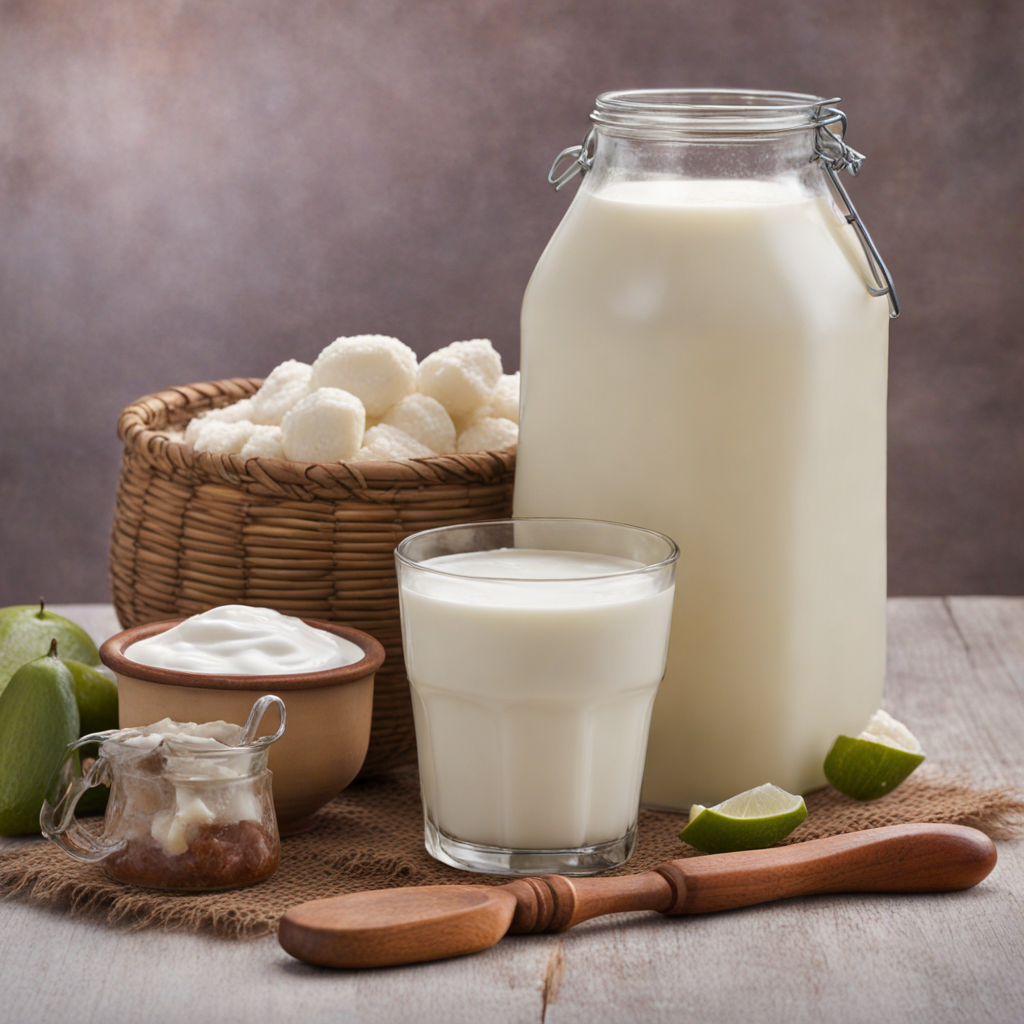Biltong
Biltong is a traditional cured meat snack originating from Southern Africa, particularly popular in Namibia. This delicacy is typically made from beef, although game meats such as kudu, ostrich, and springbok are also common. The preparation involves marinating the meat in a blend of vinegar, salt, and spices such as coriander, black pepper, and sometimes chili, which infuses the meat with a rich and savory flavor profile. The marinated meat is then air-dried for days, allowing it to develop a chewy texture while retaining its moisture, resulting in a unique contrast of tenderness and firmness with every bite. The taste of biltong is distinctively robust, with a deep umami flavor that comes from the salt and spices. The coriander adds a subtle nuttiness, enhancing the meat's natural flavors. Depending on the cut of meat and the drying time, biltong can range from soft and pliable to hard and crumbly. This versatility makes it an excellent snack for various palates, whether someone prefers a tender bite or a more intense, aged flavor. The absence of artificial preservatives makes it a healthier option compared to many processed snacks, appealing to those seeking natural food experiences. Biltong is often enjoyed as a standalone snack, but it also pairs wonderfully with cheese, fruits, and nuts, making it a delightful addition to charcuterie boards. It can be crumbled on salads or used as a protein boost in various dishes. For those looking to explore new flavors, biltong offers a taste of Namibia’s rich culinary heritage, bringing the essence of the region’s landscapes and wildlife into each mouthful. Its unique texture and taste are not just food; they are a sensory experience that transports you to the heart of Namibian culture.
How It Became This Dish
The History of Biltong: A Culinary Treasure of Namibia Biltong, a dried and cured meat delicacy, has deep roots in Southern Africa, particularly in Namibia and South Africa. Its history is a rich tapestry woven from indigenous traditions, colonial influences, and the practical needs of early settlers. Understanding biltong's origins, cultural significance, and evolution over time unveils a story that transcends mere culinary delight, encapsulating the very essence of the people and landscapes from which it comes. #### Origins of Biltong The word "biltong" derives from the Dutch words "bil" (meaning "buttock" or "thigh") and "tong" (meaning "strip" or "tongue"). Its origins can be traced back to the late 17th century, when Dutch settlers known as the Boers began to colonize parts of Southern Africa, including present-day Namibia. Faced with a challenging environment and the need for a portable source of sustenance, these settlers adapted traditional European methods of meat curing to suit the local context. Prior to the European influence, indigenous groups such as the San and Himba had their own methods of preserving meat, often using drying and smoking techniques. However, the arrival of the Dutch introduced new flavors and techniques, such as the incorporation of vinegar, spices, and salt, which enhanced the preservation process. This fusion of indigenous practices and European culinary methods laid the groundwork for what we now recognize as biltong. #### Cultural Significance Biltong is not merely a snack; it holds cultural significance in both the Namibian and South African contexts. For the indigenous communities, biltong symbolizes resourcefulness and survival. The ability to preserve meat allowed for sustenance during times of scarcity and enabled nomadic groups to travel longer distances without the need for refrigeration. Biltong became a vital part of the diet, especially in arid regions where fresh food sources were limited. In contemporary Namibia, biltong is celebrated as a national dish, often enjoyed during social gatherings, festivities, and family events. It is a staple at braais (barbecues) and is often paired with local beers or traditional drinks like omalovu, a fermented beverage made from millet. The act of sharing biltong among friends and family transcends its status as food—it fosters a sense of community and connection to cultural heritage. Moreover, biltong's significance extends beyond its culinary role. It serves as an emblem of identity for Namibians and South Africans alike, representing resilience, ingenuity, and a profound appreciation for the land. In a country where diverse ethnic groups coexist, biltong serves as a unifying element, bridging gaps between different cultures and histories. #### Evolution Over Time As Namibia and South Africa evolved politically and socially, so too did biltong. The 20th century brought significant changes, particularly with the impact of industrialization and globalization. The mass production of biltong began to take shape, leading to variations in flavor, texture, and presentation. While traditional methods of making biltong remain popular, commercial producers have introduced modern techniques that cater to broader markets, including flavored options like peri-peri, garlic, and even chocolate. The rise of the internet and social media has further transformed the biltong landscape. Artisan producers have emerged, highlighting their small-batch, handcrafted approaches to biltong, appealing to consumers seeking authentic, high-quality products. This resurgence of interest in traditional foodways has led to a renewed appreciation for artisanal biltong, with an emphasis on sustainable sourcing and ethical practices. In recent years, biltong has also gained international recognition. It has found its way into the diets of adventurous eaters around the world, praised for its high protein content and unique flavor. The global market for biltong has expanded, with specialty shops and online retailers catering to a growing audience. This exposure has not only introduced biltong to new cultures but has also sparked interest in the culinary traditions of Namibia and South Africa, fostering a broader understanding and appreciation of their rich gastronomic heritage. #### The Making of Biltong The traditional process of making biltong involves several key steps: selecting quality cuts of meat—often beef, game, or ostrich—trimming excess fat, and marinating the meat in a mixture of vinegar, salt, and spices. The marinated meat is then hung in a cool, dry place to air-dry for several days to weeks, depending on the desired texture and flavor. This slow drying process allows the meat to develop a concentrated flavor while retaining its nutritional value. In Namibia, the use of game meat is particularly prevalent, reflecting the region's rich biodiversity and hunting traditions. Species such as kudu, springbok, and oryx are often transformed into biltong, each imparting unique flavors that speak to the area's natural landscape. The preparation of biltong can vary by region, with different spices and drying techniques influencing the final product. #### A Culinary Legacy Today, biltong stands as a testament to the resilience and adaptability of the people of Namibia and Southern Africa. It encapsulates centuries of culinary evolution, blending indigenous practices with colonial influences, and modern innovations. As both a beloved local delicacy and an international sensation, biltong has transcended its humble beginnings to become a symbol of national pride and cultural identity. In Namibia, biltong is more than just food—it is a celebration of heritage, a connection to the land, and a reminder of the resourcefulness of those who came before. As the world continues to embrace diverse culinary traditions, biltong remains a shining example of how food can unite people, telling stories that span generations and geography. #### Conclusion The journey of biltong from its humble beginnings to its status as a culinary icon reflects the complex interplay of culture, tradition, and innovation. As we savor this flavorful delicacy, we not only taste the richness of the meat but also the stories of the people and landscapes that shaped it. Biltong is a delicious reminder of the past, a celebration of the present, and a bridge to the future, ensuring that this beloved food will continue to be cherished for generations to come.
You may like
Discover local flavors from Namibia


